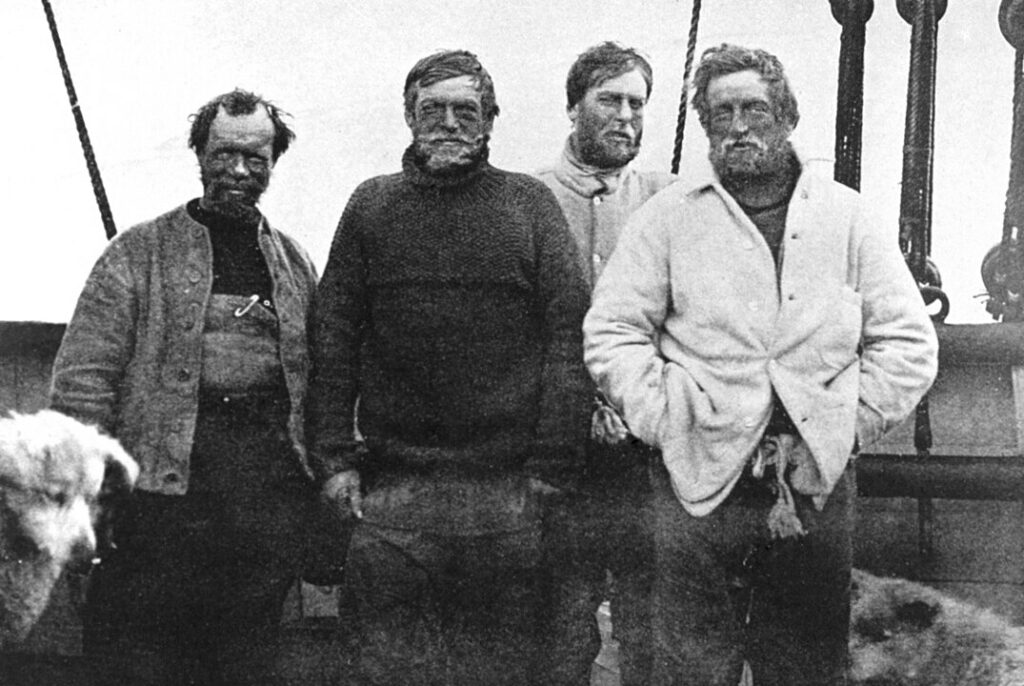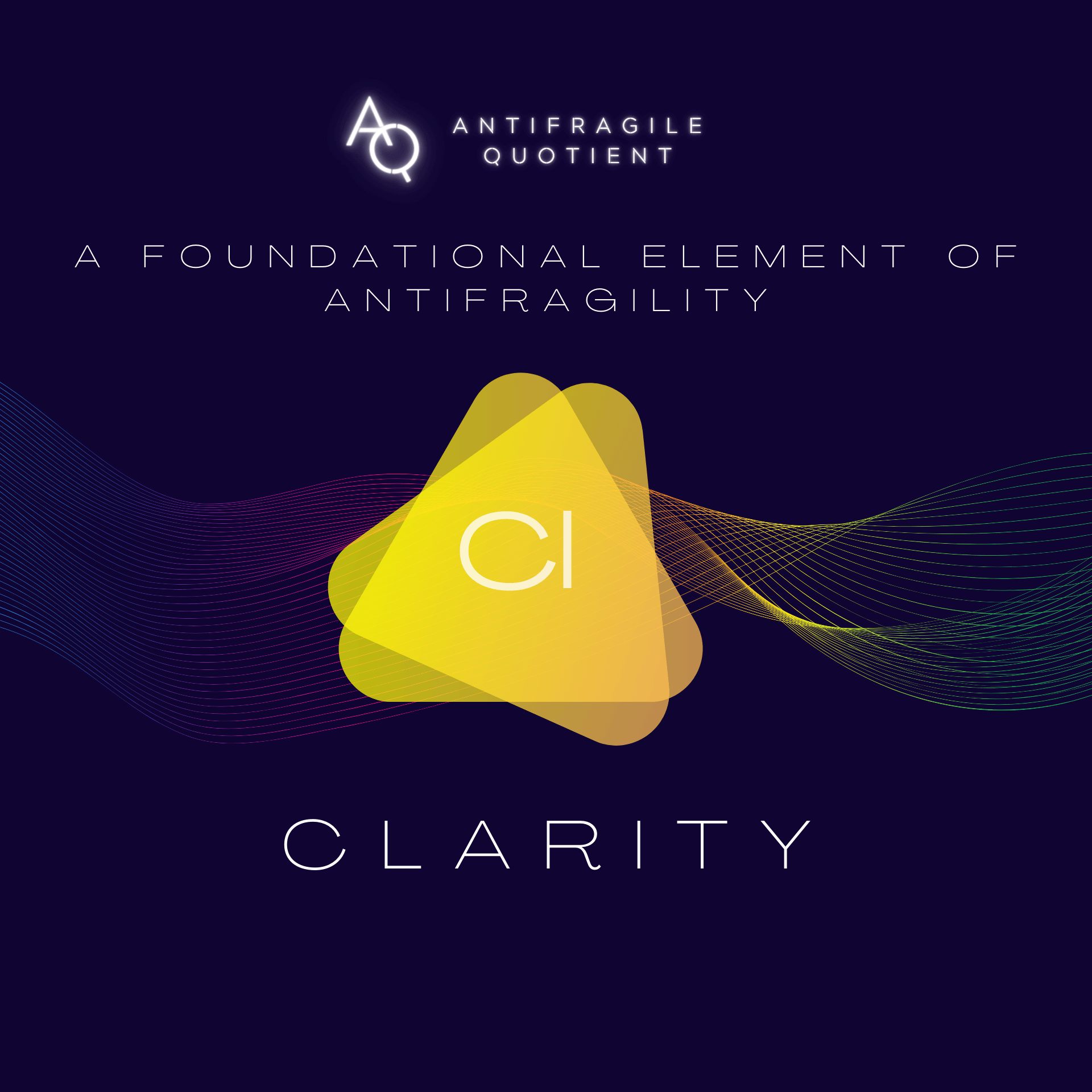The Incredible true Story of antifragility featuring Polar Explorer Ernest Shackleton
how failure led to success by radically living out the AQ Element of Clarity
Sir Ernest Henry Shackleton is best known as a polar explorer who was associated with four expeditions exploring Antarctica, particularly the Trans-Antarctic (Endurance) Expedition (1914–16) that he led, which, although unsuccessful, became famous as a tale of remarkable Antifragility.

By probably James Murray (1865–1914) - "The Heart of the Antarctic", Volume I, by E. H. Shackleton, 1909. P. 364. Downloaded from http://www.coolantarctica.com/Antarctica%20fact%20file/History/images/shackleton_the_pole_party.htmOriginally from en.wikipedia; description page is/was here., Public Domain, https://commons.wikimedia.org/w/index.php?curid=90038735
Ernest Shackleton and the AQ Element of Clarity
Ernest Shackleton is no longer a household name, but he once was. His story has been the basis for numerous leadership programs, books, and inspirational movies. Known for leading the Imperial Imperial Trans-Antarctic Expedition or Endurance expedition, Shackleton has been referred to as “the greatest leader that ever came on God’s earth, bar none.” While that assertion is hard to prove, his story is unquestionably one of exceptional leadership and one we’ve chosen to highlight for living out the Antifragile Element of Clarity.
The AQ Element of Clarity is the first of the three Foundational Elements of Antifragility, along with Purpose and Connection. The ability to live and lead in Antifragility is impossible without the ability to experience these three Elements; without Clarity, none of them are possible. Clarity means removing the mental clutter and emotional baggage that block our best perspective and inhibit us from the benefit of others’ perspectives so that we might observe the present without distortion. So how did Ernest Shackleton embody experiencing Clarity?

His Clarity Wasn’t Impacted by Avoiding What Was Hard
Shackleton never allowed his Clarity to be clouded by seeking to avoid what was hard, in small matters or large. Born Irish and living in England during unrest between the two nations, he was often fearless in declaring, “I am an Irishman.”
While known for his leadership of the Endurance expedition across Antarctica, it’s worth noting that his first expedition was as an officer aboard the Discovery from 1901 – 1903. On the expedition’s southern journey towards the South Pole, all 22 dogs died, with Shackleton and his companions suffering snow blindness, frostbite, and scurvy.
But that didn’t dissuade Shackleton, who worked tirelessly to find financial and political support for his continuing efforts. After failing to obtain a commission in the Royal Navy, he took a job as a journalist and then found a secretaryship with the Royal Scottish Geographical Society. Following a failed business venture, he ran in the 1906 General Election as the Liberal Unionist Party’s candidate for the Dundee constituency and lost.
After years spent drumming up financial support, Shackleton led the 1907 – 1909 Nimrod expedition to reach the South Pole and the South Magnetic Pole. With conditions more challenging than expected, the team eventually went to half-rations and had to turn back for fear of starvation. After giving his daily ration to a team member one day, the man wrote of Shackleton, “All the money that was ever minted would not have bought that biscuit, and the remembrance of that sacrifice will never leave me.”
Even at this, Shackleton persisted. He worked for years to repay his accumulated debt and raise additional funds for another trip. After three failed business ventures and subsisting from his time on the speaking tour, he raised funds for the 1914 – 1917 Endurance expedition. With the South Pole already having been reached, his goal shifted to being the first expedition to cross the continent of Antarctica. The journey would seal his legacy as an Antifragile leader, but not for the reason you might think.

By Probably Frank Hurley, the expedition's photographer - This photograph was published in the United States in Ernest Shackleton's book, South, William Heinemann, London 1919., Public Domain, Link
Overattachment to His Point of View Didn’t Limit His Clarity
Shackleton understood the importance of not being overly reliant on his point of view and actively took steps to broaden his team’s Clarity too. Scientists on the expedition shared in the chores with sailors, and sailors helped take scientific readings, an uncommon practice at that time.
When making life-or-death decisions during the Endurance expedition, Shackleton encouraged his crew members to share their opinions and ideas and considered their input. For example, when stranded on Elephant Island, Shackleton consulted with his crew before ultimately deciding to attempt the trip to South Georgia by lifeboat.
He was highly motivated by his goal to be the first man to reach the South Pole during the Nimrod expedition, but he didn’t allow his desire for conquest to blind him to others’ points of view. When he otherwise might have pressed on, Shackleton turned back within sight of the objective because he didn’t want to risk the lives of his team. He was also aware of his wife’s perspective and remarked on turning back when he wrote to her, “A live donkey is better than a dead lion, isn’t it?” She agreed!
His Clarity Wasn’t Clouded by Taking Things Personally
Shackleton was not only aware that people can take things personally, but he knew the chances of it were heightened on the perilous journey. He had the men rotate tentmates weekly to avoid conflict between them or have factions develop.
He led by example in this regard as well. When selecting the five crew members to accompany him on the 825-mile journey to South Georgia by lifeboat, one of the men he picked was Harry McNish. McNish was the ship’s carpenter and had been insubordinate with Shackleton while stranded on the ice flow. When selecting the crew, Shackleton chose to look past this infraction because McNish was the right man for the job. McNish had reinforced the lifeboat for the journey and may have needed it if additional strengthening was required.
Ernest Shackleton’s life and the Endurance expedition remind us that uncertainty is unending, and adversity is unavoidable. His incredible sense of Clarity allowed him to see the extreme challenges they faced without distortion and saved the lives of his crew. He is an excellent example of living and leading in Antifragility!
move forward
COMPLIMENTARY REVIEW OF EXPANDED AQ ASSESSMENT RESULTS
- 30-MINUTE REVIEW WITH A CERTIFIED AQ GUIDE
- LEARN WHERE YOUR GROWTH OPPORTUNITIES LIE
- COMPLiMENTARY FOR QUALIFIED LEADERS




